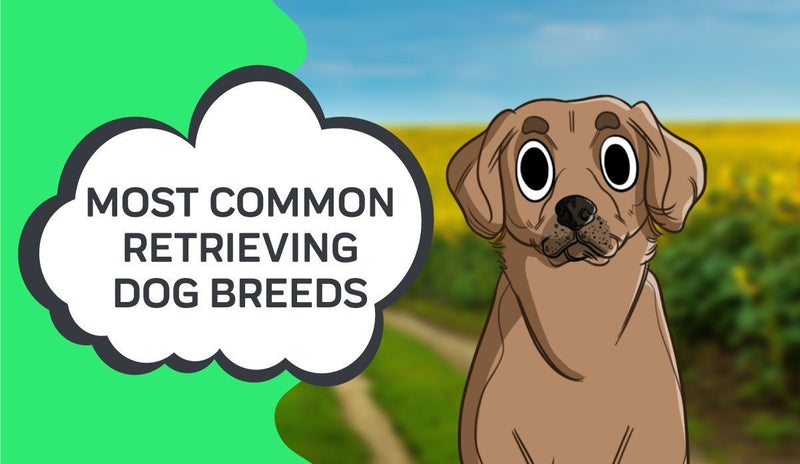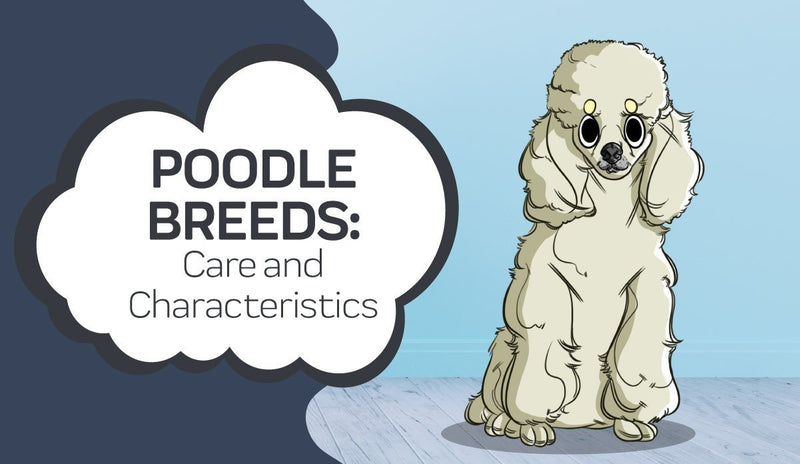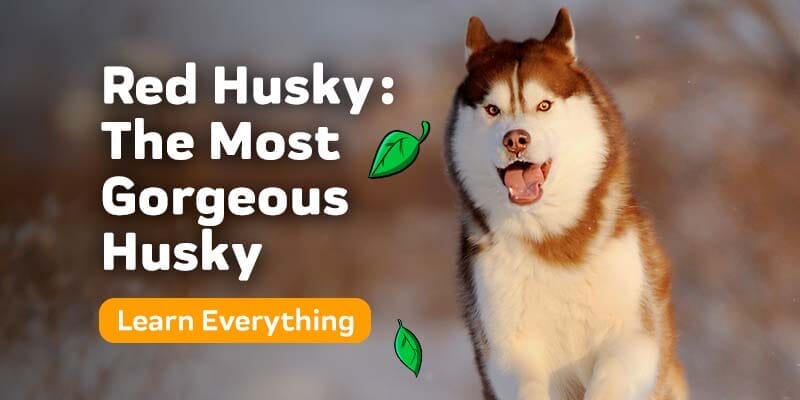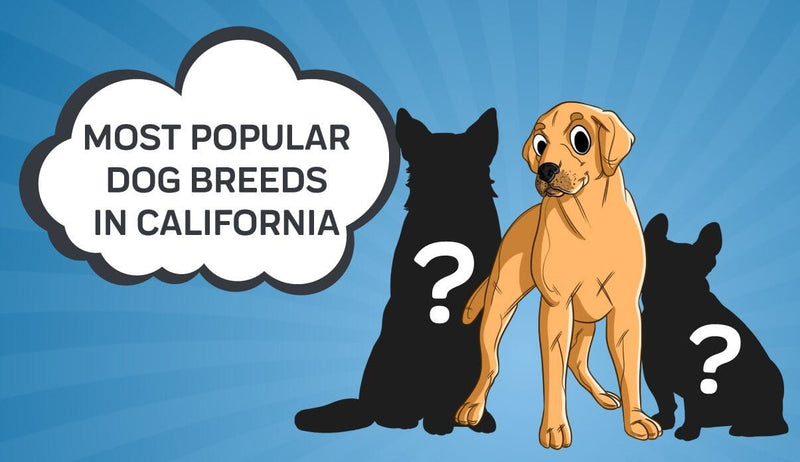Every dog breed has its own special talents and unique gifts. In fact, the American Kennel Club categorizes all dogs into one of seven dog breed groups. The groups are based off of the activities that these dogs are intentionally bred for, like sporting or retrieving.
The seven dog breed groups are...
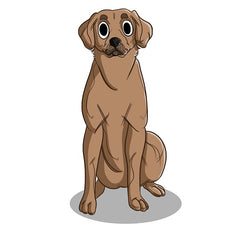
- The Hound Group
- The Sporting Group
- The Working Group
- The Terrier Group
- The Toy Group
- The Non-Sporting Group
- The Herding Group
The group we are going to focus on today is the sporting group of dogs. But before we dive into the details of the sporting dog breeds, here are all seven dog breed categories, as well as the dogs that fall into these categories.
The Hound Group
- Afghan Hounds
- American Foxhounds
- Basenjis
- Basset Hounds
- Beagles
- Black and Tan Coonhounds
- Bloodhounds
- Borzois
- Longhaired Dachshunds
- Smooth Dachshunds
- Wirehaired Dachshunds
- English Foxhounds
- Greyhounds
- Harriers
- Ibizan Hounds
- Irish Wolfhounds
- Norwegian Elkhounds
- Otterhounds
- Petit Basset Griffon Vendeens
- Pharaoh Hounds
- Plotts
- Rhodesian Ridgebacks
- Salukis
- Scottish Deerhounds
- Whippets
The Sporting Group
- American Water Spaniels
- Brittanies
- Chesapeake Bay Retrievers
- Clumber Spaniels
- Cocker Spaniels
- Curly Coated Retrievers
- English Cocker Spaniels
- English Setters
- English Springer Spaniels
- Field Spaniels
- Flat Coated Retrievers
- German Shorthaired Pointers
- German Wirehaired Pointers
- Golden Retrievers
- Gordon Setters
- Irish Setters
- Irish Water Spaniels
- Labrador Retrievers
- Nova Scotia Duck Tolling Retrievers
- Pointers
- Spinone Italianos
- Suxxex Spaniels
- Vizslas
- Weimaraners
- Welsh Springer Spaniels
- Wirehaired Pointing Griffons
The Working Group
- Akitas
- Alaskan Malamutes
- Anatolian Shepherd Dogs
- Bernese Mountain Dogs
- Black Russian Terriers
- Boxers
- Bullmastiffs
- Doberman Pinschers
- German Pinschers
- Giant Schnauzers
- Great Danes
- Great Pyrenees
- Greater Swiss Mountain Dogs
- Komondors
- Kuvasz Dogs
- Mastiffs
- Neapolitan Mastiffs
- Newfoundlands
- Portugeuse Water Dogs
- Rottweilers
- Saint Bernards
- Samoyeds
- Siberian Huskies
- Standard Schnauzers
The Terrier Group
- Airedale Terriers
- American Staffordshire Terriers
- Australian Terriers
- Bedlington Terriers
- Border Terriers
- Bull Terriers
- Cairn Terriers
- Dandie Dinmont Terriers
- Fox Terrier Wires
- Glen of Imaal Terriers
- Irish Terriers
- Kerry Blue Terriers
- Lakeland Terriers
- Manchester Terriers
- Miniature Bull Terriers
- Miniature Schnauzers
- Norfolk Terriers
- Norwich Terriers
- Parson Russell Terriers
- Scottish Terriers
- Sealyham Terriers
- Skye Terriers
- Soft Coated Wheaten Terriers
- Staffordshire Bull Terriers
- Welsh Terriers
- West Highland White Terriers
The Toy Group
- Affenpinschers
- Brussels Griffon Dogs
- Cavalier King Charles Spaniels
- Long Coated Chihuahuas
- Smooth Coat Chihuahuas
- Chinese Crested Dogs
- English Toy Spaniels
- Havaneses
- Italian Greyhounds
- Japanese Chin Dogs
- Maltese Dogs
- Toy Manchester Terriers
- Miniature Pinschers
- Papillons
- Pekingese
- Pomeranians
- Toy Poodles
- Pugs
- Shih Tzus
- Silky Terriers
- Toy Fox Terriers
- Yorkshire Terriers
The Non-Sporting Group
- American Eskimo Dogs
- Bichon Frises
- Boston Terriers
- Bulldogs
- Chinese Shar Peis
- Chow Chows
- Dalmatians
- Finnish Spitz Dogs
- French Bulldogs
- Keeshonds
- Lhasa Apsos
- Lowchens
- Miniature Poodles
- Standard Poodles
- Schipperke
- Shiba Inus
- Tibetan Spaniels
- Tibetan Terriers
The Herding Group
- Australian Cattle Dogs
- Australian Shepherds
- Bearded Collies
- Belgian Malinois
- Belgian Sheepdogs
- Belgian Tervurens
- Border Collies
- Bouvier des Flandres
- Briards
- Canaan Dogs
- Cardigan Welsh Corgis
- Rough Collies
- Smooth Collies
- German Shepherd Dogs
- Old English Sheepdogs
- Pembroke Welsh Corgis
- Polish Lowland Sheepdogs
- Pulis Dogs
- Shetland Sheepdogs
Retrieving Dogs
The American Kennel Club does not call any dog breeds retrieving dogs, but the most common retrieving dogs fall into the AKC category of sporting dogs. For all intents and purposes, sporting dogs are the same as retrieving dogs.
Technically speaking, there is not a retrieving dog breed that can be deemed the best retrieving dog breeds. But out of the twenty-six dog breeds that the American Kennel Club classifies as sporting dogs, there are definitely seven dogs that are more common than the other retrieving dog breeds.
The top three most common retrieving dog breeds are…
- Chesapeake Bay Retrievers
- German Shorthaired Pointers
- Golden Retrievers
- Irish Setters
- Labrador Retrievers
- Pointers
- Weimaraners
Let’s go on to talk about the details of each of seven best retrieving dog breeds! From the most common dog breeds and types of sporting dogs, to types of pointers dog and the most popular family dog breeds, we cannot wait to help find the best sporting dogs for you!
retrieving dog breeds, retrieving dog, best retrieving dog breeds, dog breeds pointers, most common dog breeds, common dog breeds, akc dog breeds selector, types of sporting dogs, sporting dog breeds, types of pointers dog, most popular family dog breeds, sporting dogs for you, bay dog breeds
Chesapeake Bay Retrievers
Chesapeake bay retrievers are a sporting and retrieving dog breed that is bred in the United States of America. Also called CBR dogs, Chessies, and Chesapeakes, the Chesapeake Bay Retriever is a beautiful dog, recognized particularly for its large size and skill set.
Named after a body of water in between the American states of Virginia and Maryland, the Chesapeake Bay Retriever is an excellent dog wherever water is involved. They make for wonderful family dogs, especially for those of you who enjoy escapades in nature and adventurous weekends out in the mountains. Chesapeake Bay Retrievers are the perfect kind of dog for anyone who makes a hobby out of fishing or spends a lot of time near a lake.
German Shorthaired Pointers
This may come as no surprise, but the German Shorthaired Pointer is a dog breed that originated in Germany. A dog of many nicknames, this dog breed is recognized as the Deutscher Kurzhaariger and the Vorstehhund, as well as the Deutsch Kurzhaar and the Kurzhaar.
The German Shorthaired Pointer is very similar to golden retrievers in that these dogs make wonderful additions to just about any and every family. Since they are literally bred for the purpose of being adopted by families, you could definitely consider German Shorthaired Pointers one of the most popular family dog breeds.
Golden Retrievers
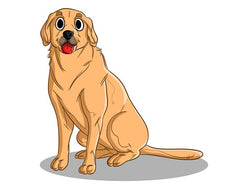
The average male golden retriever weighs approximately sixty-five pounds at a minimum, and seventy-five pounds at its heaviest. Females are just about ten pounds lighter than most male golden retrievers. The average minimum weight of female golden retrievers is roughly fifty-five pounds, with the heaviest female golden retriever typically weighing about sixty-five pounds.
The height difference between male and female golden retrievers is barely noticeable to the naked eye. Adult female golden retrievers tend to reach an average height of twenty to twenty-two inches tall, while male adult golden retrievers are closer to between twenty-two to twenty-four inches tall.
The typical lifespan of a golden retriever, regardless of the dog's gender, is approximately ten years, with a higher average of twelve years. The fur of a golden retriever is partly responsible for the retrieving dog breed's name because the coat is a golden, off-white, and creamy color. Many golden retrievers have straight fur except for the fur near its stomach and neck. In these places, the fur of a golden retriever tends to be curly or wavy, depending on the dog and the length of the pup's fur.
Golden retrievers are one of the most popular family dog breeds. Of all the dog breeds in the world, golden retrievers are the third most popular retrieving dog breeds.

Irish Setters
As the name suggests, Irish Setters belong to a dog breed that originated in Ireland. Also known as Irish Red Setters, and sometimes simply as Red Setters, the Irish Setter dog breed is another one of the most common dog retrieving breeds on the planet. Visually, an Irish Setter is a stunning dog, with burgundy and mahogany brown fur that creates quite a beautiful coat. Sometimes described as a red or chestnut color, the fur of an Irish Setter is both wavy and long. The slight wave of the fur makes Irish Setters appear to be very poised and royal.
Interestingly enough, the coat of an Irish Setter tends to grow like crazy during the season of winter. The point of this is to keep the dog warm while the weather is colder than usual. Irish Setters make for one of the most popular family dog breeds, given the nature of their temperament. As a dog breed that pairs very well with children and people in general, Irish Setters do very well in family environments. Whether you are looking to welcome a dog into your household for the very first time, or you are thinking about introducing another puppy into your family, an Irish Setter might just be one of your best choices!
This is not true for every situation, though. The one very important detail to take into consideration is the fact that Irish Setters might not be the most compatible dog breed for smaller dogs, like a miniature Schnauzer or a small Chihuahua, for instance. This is not because Irish Setters are a dangerous or aggressive dog, by any means.
The reason for this important detail is that Irish Setters just happen to be very tall dogs, and as a naturally big dog breed, they do not always understand the gravity of their height and their weight combined -- especially when an Irish Setter goes through its first major growth spurt as a puppy.
For a little while, Irish Setter puppies will take some time to understand that they are not small and weightless once they grow. It will take time for them to adjust to their new size, and as natural retrieving dogs, the element of being a hunting puppy by nature will bring instincts into play. Irish Setters will not start to hunt other animals in the household, but they will come across as too playful for animals that are smaller than them, like cats.
Out of all one hundred ninety-three dog breeds registered under the license of the American Kennel Club, Irish Setters rank as the seventy-seventh most popular dog breed. The temperament of Irish Setters is made up of traits such as energetic, even-tempered, friendly, and sweet.
If you have children above the age of six and your family does not have any dogs already in the household, then an Irish Setter is the perfect first puppy! Even so, this is not to say that you should not adopt an Irish Setter under the opposite conditions. You certainly can, but please be prepared to slowly introduce your current pets to your newly adopted Irish Setter. Everything will run smoothly once the dogs are well-acquainted with one another.
Labrador Retrievers
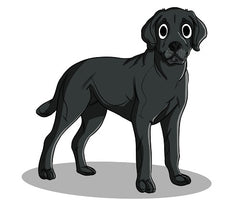
The average labrador retriever is between fifty-five and eighty pounds. The exact weight depends on your dog in particular, but the range depends on the gender of your labrador retriever. For instance, a male labrador retriever is approximately sixty-five pounds on the low end, with the heaviest average weight being closer to eighty pounds.
Adult female golden retrievers, on the other hand, tend to weight slightly less than their male counterparts. This is typically true across the board for female dogs in general, and that is no exception for female labrador retrievers. Adult female labradors are usually anywhere between fifty-five to seventy pounds when fully grown. There is very little difference in the height of female and male adult labrador retrievers, and the same goes for their coat colors.
Did you know labrador retrievers come in a variety of colors, and yet, they are all still part of the same retrieving dog breed? The coat color of a labrador retriever puppy tends to depend on the fur of the mother of the litter, but no matter what, you can expect puppies to be born with fur that is either brown, yellow, red, or black. Litters of labrador retrievers are usually born in sizes of five to ten puppies per litter, and labrador retrievers live to be anywhere between twelve and thirteen years of age.
Labrador retrievers are easily the most popular retrieving dog breed of all time. According to the rankings put forward by the American Kennel Club, labrador retrievers are the most popular dog breed across the board.
Out of all one hundred ninety-three dog breeds recognized by the Kennel Club, labrador retrievers are the number one most popular dog breed! As a member of the sporting group and a retrieving dog breed, labrador retrievers are some of the sweetest, most active, and comforting dogs of all time.
Pointers
Yet another breed of retrieving dogs is the pointer. Pointers, also known as English Pointers, are a dog breed that originally arose in England. The fur coats of English Pointers are not terribly long, and the fur is very dense, more so than it is fluffy.
The fur of an English Pointer rests very close to the skin of the dogs, and the fur is usually a cream or white-colored coat. However, Pointers are not completely one color. They tend to have random and sporadically placed patches of darker fur, ranging from orange, black, and brown spots.
The height of an English Pointer depends on the gender of the particular dog. Adult female Pointers can grow to be anywhere between twenty-three and twenty-six inches, whereas the male adult dogs are closer to a range of twenty-five and twenty-eight inches tall. Male Pointers weight an average of fifty-five to seventy-five pounds, while the female Pointers tend to weight anywhere between forty-five and sixty-five pounds.
Weimaraners
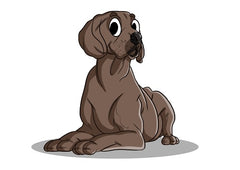
Originally from German, the Weimararaner Vorstehhund -- or Weimaraner for short -- is well-known for its knack for hunting. Also called a Grey Ghost, and sometimes referred to as a Raner, the Weimaraner is actually categorized as a gun dog. This means that they are purposefully bred so that they make excellent companions for hunters. The instincts of gun dogs entail locating prey that has been shot down by the hunters and leading their owners to the animals they have hunted.
CBD for Retrieving Sporting Dog Breeds
Retrieving dog breeds are very active animals. Sometimes, it can be difficult for them to slow down and relax in the evening. As a result, some retrieving dog breeds can have difficulty falling asleep in a timely manner. Every once in a while, it is okay to have an off sleeping schedule, but if it persists, your retrieving dog can start to struggle with sticking to a regular routine.
If you have a puppy that falls into the category of sporting dog breeds, then CBD for dogs might be the answer to your nightly prayers. Raising a puppy is so much fun, but it can also become very draining very quickly if you struggle to get your puppy to adhere to a sleeping schedule. Cannabidiol for retrieving dog puppies is one of the most effective supplements, and the best part is that there are absolutely zero negative side effects of CBD for dogs.
And this is not true for puppies alone. The claim holds true for dogs of all ages! Whether your retrieving dog is a month-old puppy or a twelve-year-old dog, cannabidiol can help improve your pup’s nightly sleep routine, daily activity levels, and everything in between, including stress responses and anxiety issues that may arise!
If any of these situations apply to your retrieving dog breed pet, then head on over to the inventory supplied by Innovet! You will find a wide array of CBD products for dogs. From hemp-based dog treats and chewy snacks for canines, to cannabidiol dog capsules and CBD oil for pets, there is a CBD product for every retrieving dog breed under the sun.
If you have any questions, please feel free to reach out to Innovet. We will get back to you in a timely manner, and we cannot wait to see your retrieving dog breed canine feel better with the help of CBD for pets!
Sources:
The 7 AKC Dog Breed Groups ExplainedPointer
Labrador Retriever
Irish Setter
Golden Retriever
German Shorthaired Pointer










